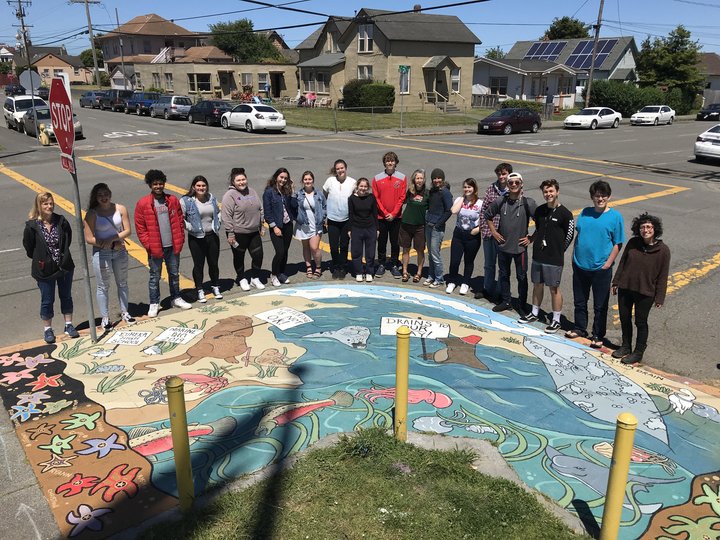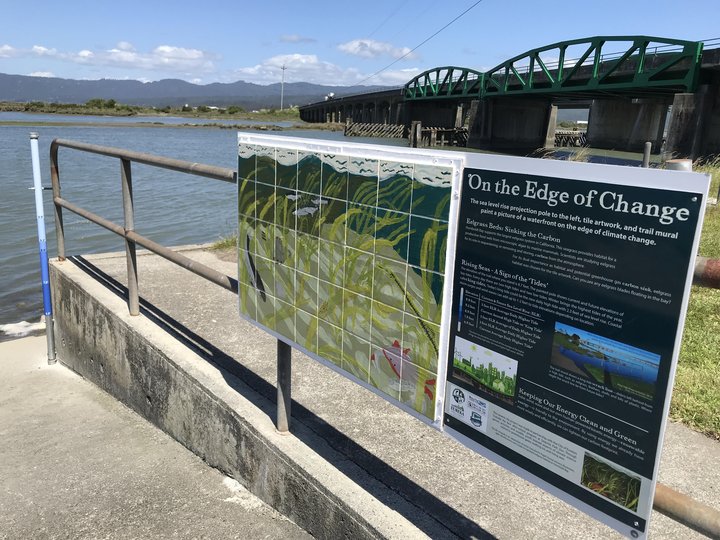News flash: Storm drains are not magical black holes for your refuse. To help us all remember this fact, a new splash of educational color has been lovingly applied to the pavement surrounding two such drains at the corner of J and Del Norte streets in front of Eureka High School. Never forget!
Humboldt State University art student Mir de Silva recently completed work on the mural project which was organized by Redwood Community Action Agency (RCAA) and funded by the Humboldt Area Foundation. The installation was inspired by Arcata’s similar “Downstream Designs” public art. More on the work from RCAA:
RCAA has been working with the EHS Marine Biology class all year through a Rose Foundation Watershed Protection Fund on overall storm drain awareness, litter clean ups and water quality testing in partnership with Pac Out Green Team and City of Eureka’s ECO Eureka, and getting the message out about single-use throw-away plastics, a major contributor to stormwater pollution.

EHS student-mural frame

New interpretive sign on the Eureka Waterfront Trail
In other local environmental art news, local youth enrolled in the City of Eureka’s “Outside the Box” after school program recently saw the installation of their own RCAA-organized project: a new sea level-rise interpretive site located behind Target on the Eureka Waterfront Trail. A description of the work, also courtesy RCAA:
Youth participated in a series of activities and presentations exploring aspects of climate science as it relates to sea level rise. They made predications, based on models, to find out whether melting sea ice or land ice contributes more to rising seas (spoiler: it’s land ice). They learned about the carbon life cycle and its role as a greenhouse gas. They studied the web of life in eelgrass beds and the role eelgrass may play in sequestering or absorbing and storing, carbon. The painted a ceramic tile eelgrass bed mosaic, tiles fired by Parks and Recreation Department.
The interpretive site features the youth’s ceramic tile project, a sea level rise projection pole, interpretive signage, and a trail mural representing a wrack line, the debris left from a high tide, specifically a king tide, the highest tides occurring in winter months.

Eureka after school program artists at a “virtual ribbon cutting” for for their project

Local artist Blake Reagan adds some detail to the project site
CLICK TO MANAGE